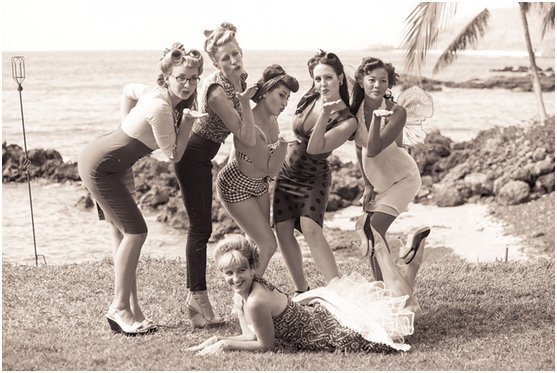an era marked by post-war exuberance, economic prosperity, and a resurgence of glamour that manifested in the world of fashion. This pivotal decade witnessed the evolution of styles that continue to captivate the imagination of fashion enthusiasts and designers alike. From the iconic hourglass silhouettes to the rise of rebellious youth subcultures, 1950s fashion stands as a testament to the transformative power of clothing and its ability to reflect the spirit of an era.https://taptu.mobi/
Table of Contents
Toggle1. The Return of Femininity: The Hourglass Silhouette
At the heart of 1950s fashion lies the celebration of femininity. The hourglass silhouette, characterized by nipped-in waists and full, voluminous skirts, became the epitome of women’s fashion. The influence of Dior’s “New Look” was profound, setting the stage for an era where women embraced a more defined and curvaceous form. Dresses adorned with polka dots, florals, and pastel hues became wardrobe staples, exuding an air of sophistication and grace.
2. Rebel with a Cause: The Birth of Youth Subcultures
While the mainstream embraced polished elegance, the 1950s also witnessed the emergence of rebellious youth subcultures that paved the way for future countercultural movements. The iconic leather jackets, blue jeans, and slicked-back hairstyles of the greasers clashed with the preppy aesthetic of the “squares.” This cultural divide not only shaped fashion but also served as a visual representation of the societal shifts and generational tensions of the time.
3. Hollywood Glamour Takes Center Stage
The silver screen played a pivotal role in shaping 1950s fashion, with Hollywood icons influencing the masses with their impeccable style. Stars like Audrey Hepburn, Marilyn Monroe, and Grace Kelly became fashion icons, showcasing a mix of elegance and allure. Hepburn’s timeless little black dress in “Breakfast at Tiffany’s” and Monroe’s iconic white dress in “The Seven Year Itch” remain etched in the annals of fashion history.
4. Technological Innovations: Fabrics and Colors
The 1950s also saw technological advancements influencing fashion. The availability of synthetic fabrics like nylon and polyester led to the creation of new textures and designs. Pastel colors dominated the palette, reflecting the optimism of the post-war era. A myriad of prints https://jumpstartfashion.com/ from gingham to florals, added vibrancy to wardrobes and became synonymous with the era’s aesthetic.
5. The Influence of Teen Culture: Casual and Sporty Styles
As teenagers emerged as a distinct demographic, their influence on fashion became more pronounced. Casual and sporty styles gained popularity, with polo shirts, cardigans, and poodle skirts becoming emblematic of youthful exuberance. The concept of “teenagers” as a consumer group began to shape the fashion industry, setting the stage for the youth-driven culture that would define subsequent decades.
In retrospect, 1950s fashion was a melting pot of elegance, rebellion, and innovation. Its influence reverberates through the decades, and the enduring appeal of its styles serves as a testament to the era’s impact on the world of fashion. Whether revisiting the glamour of Hollywood’s golden age or embracing the subversive spirit of the youth subcultures, the 1950s continue to inspire and shape the way we perceive and celebrate style.

